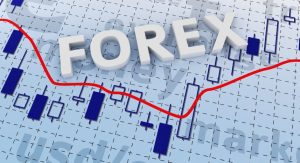Table of Contents
The global markets delivered outsized returns from March through July 2023. What began as a lacklustre year took an unexpected turn for the better, delivering outsized profits to traders and investors. For example, the S&P 500 index rallied +19% from March through July before a steep drop in August occurred.
The multi-month bull market largely outpaced negative expectations, including significant inflationary headwinds and the attendant rising interest rates designed to quell them.
The rally in the S&P 500 wasn’t the only significant movement in the financial world. Currency markets, which often react to stock market shifts and broader economic trends, have also shown intriguing patterns of late.
Top Trends in Global Forex Markets

How Are the Currency Markets Performing?
A rudimentary understanding of the forex market is essential to understanding the state of the global financial markets. As a newcomer to the currency trading arena, it’s imperative to have a solid grasp of forex for beginners. This naturally lends to a discussion of currency trading, the exchange of one currency for another based on demand. As with any other discipline, Forex trading encompasses multiple avenues, such as contracts for difference (CFDs) and spot forex (the purchase of actual currency).
As we head into the final quarter of the year, the greenback – the world’s reserve currency – edged lower against a basket of currencies, snapping a multi-week bull run. Dollar strength or weakness is heavily influenced by the actions of the Federal Reserve Bank. The US Dollar Index – a popular barometer of dollar power indicated that the greenback pulled back against all major competitors (GBP, JPY, EUR, CHF, CAD, SEK).
While not a significant drop, the short-term trend is clear – the dollar has weakened. While the US raised rates, the People’s Republic of China dropped rates with a ten basis point drop in the lending rate. Fed chair Jerome Powell is expected to remain hawkish about the structural shifts in the global economy. Investors anticipate no change in direction, with interest rates set to remain high for the foreseeable future. This is the most significant trend in the global financial markets.
Current Interest Rates in the UK, Europe, the US, & Japan

Analysts at Trading Economics tabulated the inflation rates and interest rates of the UK, Europe, and the United States heading into the final quarter of 2023:
- The United Kingdom currently has an inflation rate of 6.8% (August 2023), with an interest rate of 5.25%.
- European countries,k.a. the Euro Area, have an inflation rate of 5.3%, with an interest rate of 4.25%.
- The United States currently has an inflation rate of 3.2%, with an interest rate of 5.5%.
- Japan currently has an inflation rate of 3.3%, with a negative interest rate of -0.1%.
Central Bank Responses
Similar trends are evident across the board, and reserve banks tend to follow the example set by the Fed. In most instances, interest rates have risen, leading to higher borrowing costs. This has a contractionary effect on global spending (a leading indicator of inflation).
There is a solid relationship between interest rates and exchange rates, as indicated inflation in the foreign exchange markets. It is clear that central bank manipulation of interest rates for targeting directly affects exchange rates.

Demand for currencies changes when the Fed, the Bank of England, or the European Central Bank decide to raise rates relative to other central banks. Higher interest rates translate into increased demand for that country’s currency. Lower interest rates tend to temper demand for that country’s currency.
But this must be viewed in the context of myriad factors, including economic stability, inflation rates, credit rating, et cetera. As a rule, investors can expect better returns on currencies with strong economies that raise interest rates. Lower interest rates have a dampening effect on exchange rates.
The winds of change swept through the financial markets in August 2023, delivering a rather lacklustre performance across all major indices. Cracks have opened in the otherwise robust economies of the United States, the United Kingdom, continental Europe, and beyond.
Rising inflation and the erosive effect on discretionary spending are hampering further growth in the financial markets. Bullish sentiment has been tempered, and market forces are presenting more realistic price points for stocks, commodities, indices, currencies, and other financial instruments.


